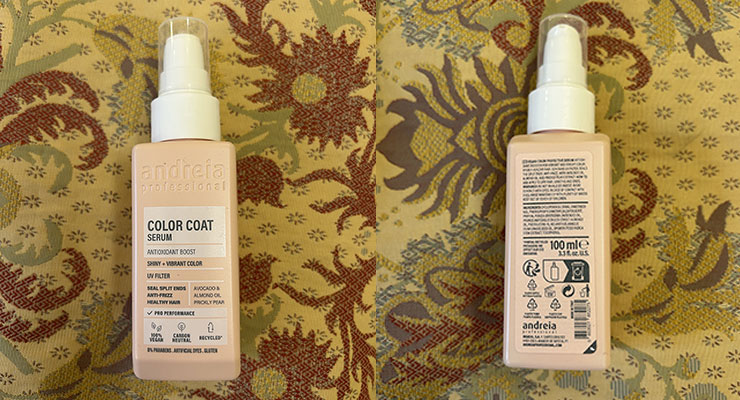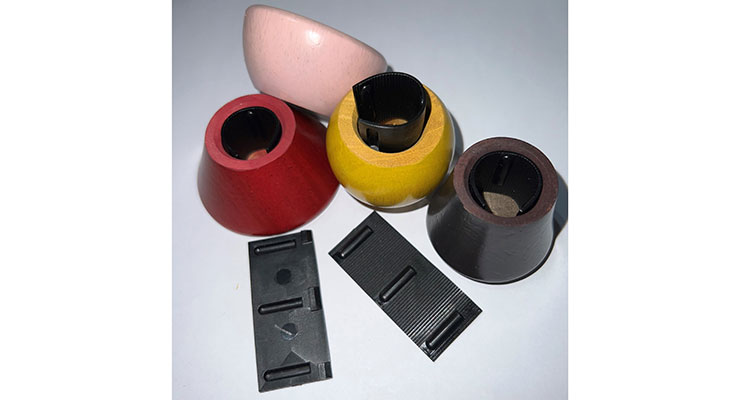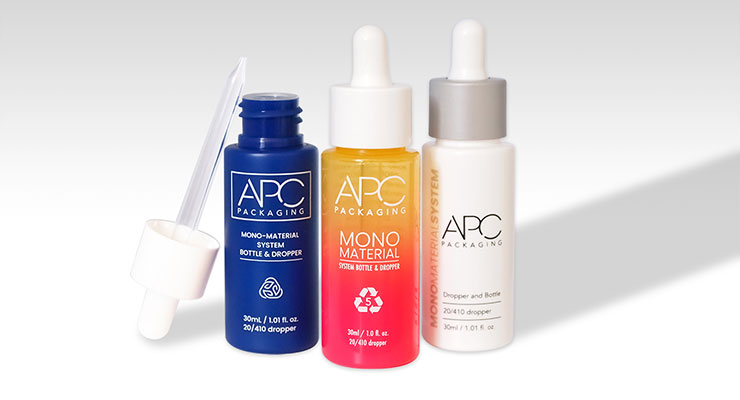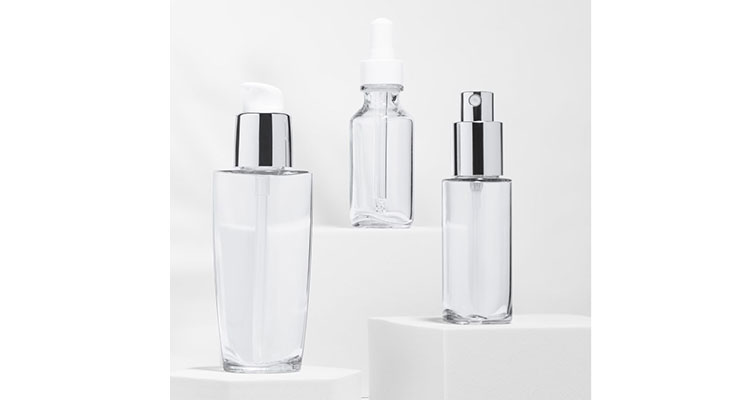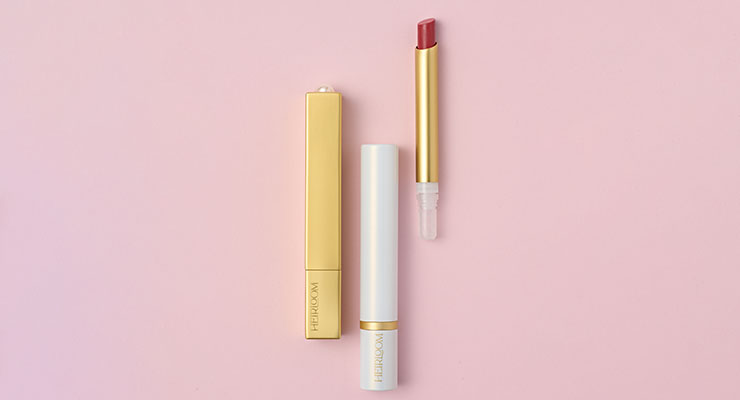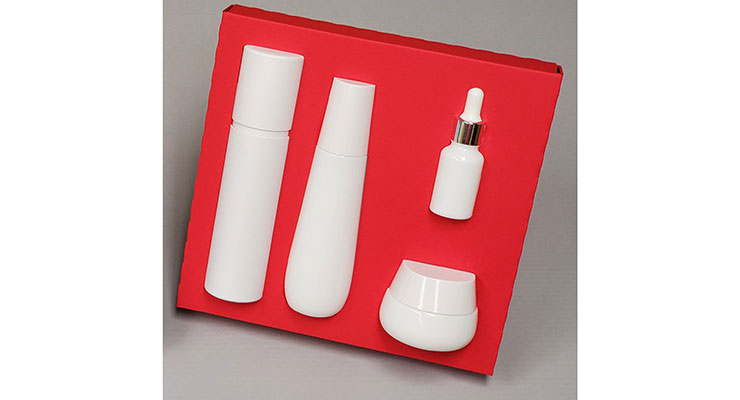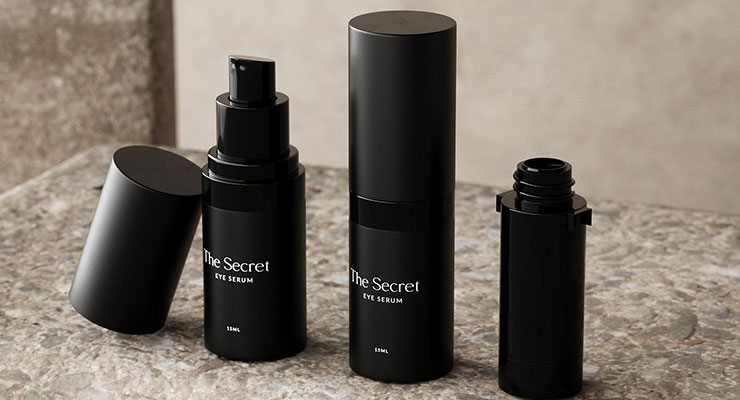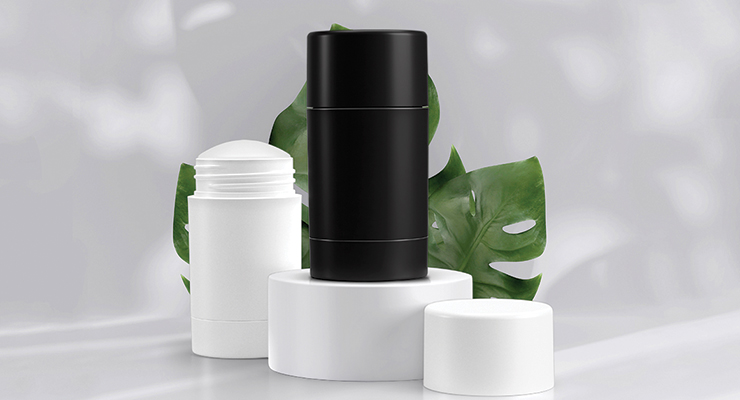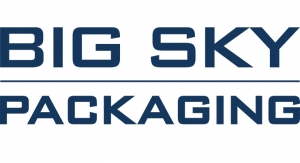Suppliers are meeting new sustainable packaging regulations—and a rise in consumers’ eco-consciousness—with products and materials that merge durability, compatibility, aesthetics and authenticity. With packaging increasingly serving as a billboard for sustainability credentials, numerous challenges and opportunities await.
From material costs to energy efficiencies, carbon neutrality to effective recycling, cosmetic industry suppliers and brands continue to strive for an eco-friendly beauty future, prompted by consumers concerned with global fragility. Along the way, they are challenged to meet daunting requirements for finished products, including durability, compatibility, sustainability and style.
Progression has been swift. Just a few years ago, eco-packaging was touted by a handful of beauty industry suppliers, and brands with ecological DNA at their core. At the recent Luxe Pack in LA, MakeUp in LosAngeles and Cosmoprof Bologna, nearly every exhibitor offered a range of eco-solutions.
While consumer demand grows—and increased legislation and deadlines nudge closer—there remains confusion about the best alternative solutions, which packaging and materials are “truly” sustainable, and the efficiencies/inefficiencies/realities of recycling, coping with higher costs, and a complicated supply chain. Issues from recycling small components (and lack of recycling facilities in the U.S., in general), to availability of some eco-materials, are also hampering progress.
Still, the carbon conundrum has ultimately created a huge opportunity for the packaging industry.
According to a recent report from Research and Markets, “Sustainable packaging (defined as packaging designs that have the least amount of environmental impact) is all about being conscious of the company’s carbon footprint.” In 2022, the global green packaging market was valued at $223.97 billion and is predicted to reach $325.70 billion by 2028.
Refillables are becoming more of an accepted sustainability option by consumers, and forward strides have been made in other areas as well, such as usage of glass, PCR, paper, ocean plastics and metals.
Tackling Consumer Demand
David Luttenberger, Mintel’s global packaging director, tells Beauty Packaging, “In BPC [Beauty & Personal Care] in the post-pandemic environment, value rules and social norms are challenged, and politics and legislation often blur environmental truths."He continues: "Specifically, with self-care and wellness being driving forces, it has become challenging for BPC brands to address how, economically, socially and responsibly, to create product and package solutions for consumers who are also seeking experimentation, social responsibility, and even value from brands in traditional retail venues as well as online and via e-commerce."
He adds, "This means package manufacturers must deliver physical, emotional, visual, digital and even environmental attributes that mesh with beauty and personal care."
See also: Mintel's David Luttenberger Looks Through a PESTEL Lens
But cosmetic industry suppliers have persevered, taking on the challenges and making great strides.
For this month’s special report, Beauty Packaging reached out to a number of suppliers and brands to learn more about current trends, which sustainable features are most in demand, and how brands are utilizing packaging to tell compelling “green” stories via all forms of promotion and on-package messaging. We hope you gain some valuable insight through their thoughtful responses included here.
See also: Beauty Execs Talk ‘Sustainable Packaging 2023’ and Beyond
Beauty Consumers are ‘More in the Know’ Now
Recent studies have found that consumers are now more aware of product packaging, with many saying they choose to support brands that tell a planet-friendly story. Increasingly, packaging for beauty brands serves as a billboard for sustainable symbols, asset descriptions, disassembly information and QR codes that provide in-depth details. Possibly owing to the pandemic, buyers seem increasingly concerned with health and clean formulas as well as clean packaging.Mark Bellard, president of packaging provider Siloa, agrees, saying, “The sustainability of the packaging is now an important factor in the buying decision for an increasing percentage of consumers. The customers and consumers are driving the sustainable packaging movement and the supply base has embraced the challenge. Brands are telling their sustainability stories in all forms of promotion, advertising, media and on-package messaging.”
At APC Packaging, Rick Ponte, vice president of project engineering, sees the same trend: “Brands are using online, social media and even direct labeling on the product to indicate the level of sustainability of the package.”
APC Packaging developed a 3-tier system geared around sustainability and customer experience. The system is for APC’s jars, airless, and refillable platforms using glass, PET and PP. All 3 materials use PCR where possible allowing for different levels of customer experience. Ponte says, “We also are offering sustainability in 3 ways: Engineering with sustainable materials; using PCR wherever possible; and light weighting to use less plastic in packages.
In many cases, alternative materials are replacing more traditional ones.
Stephanie Rowntree, global product manager, HCP Packaging, tells Beauty Packaging, “Sustainable packaging developments have strongly focused on supporting customers with finding alternative material solutions as the industry moves away from styrenics and navigating regulations around PCR and refill formats.” She says HCP works “closely and transparently” with their customers to rework packaging formats for a reduction in virgin resin or design modifications to become refillable, as well as incorporating material alternatives with a more sustainable footprint.According to Rowntree, “A challenge that faces both brands and suppliers is meeting the demands of the modern beauty consumer who now expects products to have eco-credentials as standard, but without compromise to aesthetics or functionality.”
There have been many recent breakthroughs that have led to a more sustainable future being achievable incrementally, according to HCP’s global design director, Rebecca Goswell. For one, the cost parity and ready availability of quality, traceable PCR oil-based polymers, such as PET and PP, as well as molecular recycling by companies such as Eastman. She explains, “True innovation is driven by the development of alternative materials that are non-fossil based, but compatible with traditional manufacturing processes and mold function (i.e., HCP’s EcoWood).
“A marked change within the industry,” says Goswell, “is the commitment by major brands to introduce a circular, ‘cradle to cradle’ mentality, with pack elements being returnable either directly or via in-store recycling centers. We are seeing a change in perspective toward making refillable work at point of sale; Covid has facilitated a consumer shift to buy online, where refill inventory is easier to manage.”
Beauty consumers are demanding more transparency and sustainable leadership from brands than ever before according to Tara Cary, Eastman cosmetics packaging segment manager. She tells Beauty Packaging, “Consumers are prioritizing both the product ingredients and the packaging in evaluating a product’s impact on the environment.” She explains, that nearly 2 in 3 consumers trust brands to make claims about their products being sustainable or environmentally friendly.
Beauty is certainly not the only CPG sector impacted by sustainability—but more mainstream consciousness may be currently leading to its uptick in scrutiny.
David Heubach, Inoac Packaging Group’s account manager, notes, “Sustainability has become mainstream, so every consumer, not just beauty consumers have a heightened awareness to this cause. Companies are now committing to a certain level of recycled content, recyclability or reuse in the way that they are branding their products going forward.”
At Neenah, Gary Bernstein, senior director of packaging & sustainable solutions, says, “Consumers have a heightened sense around sustainability, which means they are looking at all packaging components with a discerning eye. Therefore, brands will utilize uncoated or natural-colored cartons to communicate eco-friendly, and often include the percentage of post-consumer content on the packaging. Brands have also started printing recycling instructions on cartons, bottles, etc., to clear up any confusion in the consumer’s eye.”
A ‘Planetary Emergency’ Stage’
Musa Pharand Dias, WWP Beauty CMO and head of global innovation, says, “Sustainability is not a trend, and the new way of sustainable living will prevail as we enter a ‘Planetary Emergency’ stage.” She says today’s customers are more educated and eco-conscious, “shaping the brands and changing our industry.” Brands resonate with customers’ demands and increasingly communicate sustainable product features on primary and secondary packaging, explains Dias.Sustainable packaging has become a key consideration for brands of all sizes—right from the start.
At General Fibre, Jonathan Tarantino, vice president sales, says, “We are seeing that most brands are very aware of sustainable packaging. We also see that most top beauty brands have sustainability goals. Even most start-up brands seem to try and begin their packaging with sustainability in mind.”
Tarantino has also found that paper solutions that look luxurious, have a robust design, and are able to pass rigorous ship-and-drop testing are required by most cosmetic and beauty companies.
Sustainability Influencers
Beauty consumers from around the world are huge influencers of sustainable packaging, according to HCP Packaging—and in this age of social media, transparency is more important than ever.HCP Packaging’s Rowntree tells Beauty Packaging, that she sees more awareness, especially among younger Gen Z consumers. She says that brands that primarily retail online, such as Rose Inc, are a good example of how a website can be used to communicate the utilization of recycled materials, or to highlight smart design to limit unnecessary materials as well as give guidance as to how to disassemble and recycle packaging once finished.
She says that other brands such as Happ!Mess sell refillable skincare with a subscription-based model for automatic replenishment, encouraging both brand loyalty and commitment to the refill revolution. “In the age of social media and a highly educated consumer, the sustainable credentials that brands communicate must be genuine and traceable so as not to be called out as greenwashing,” says Rowntree.
Momentum has grown worldwide. According to Lynn Lu, HCP’s global product manager, “In China, we see brands that target younger consumers willing to commit to sustainable packaging such as refill packs. One example is Zhiben, a Chinese skincare brand that launched an app that allows their customers to send back empty packs, and be rewarded with points redeemable on their next purchase.”
However, more education continues to be a must for consumers. HCP’s Goswell, points out: “The most successful sustainable packaging should be designed with effortless customer education in mind. Making refilling and disassembly features newsworthy is obviously an advantage—enhancing and not compromising brand equities.”
More and more, sustainable packaging is being required by influential retailers, too.
At Seacliff Beauty, Brian Saputo, CTO & president, says it is becoming somewhat of a requirement with select retailers for the brands they carry to use sustainable packaging. Retailers are telling their brands—and brands that are trying to go into their stores—to change their packaging to meet these requirements. “As a result,” says Saputo, “we are seeing more brands implement changes such as using more sustainable materials or implementing a refillable packaging program.” Brands are communicating this with their customers through their messaging as well as indicating it on their packaging artwork, says Saputo.
What Brands Are Shopping for from Suppliers
Beauty brands often rely on cosmetic packaging suppliers for expertise and education in order to determine the best approach. Beauty consumers have to navigate the products on their own to determine which they want to support.Steve Corsi, VP packaging development, Roberts Beauty, says, “As a supplier, it is our job to be steps ahead and offer authentic solutions with a reasonable price and lead time. A brand’s biggest challenge/opportunity is to offer an authentic sustainability solution that works within the framework of the dialog they have with their consumer. We always recommend that our brand partners have a sustainability mission in place and re-evaluate it regularly. The consumer’s biggest challenge/opportunity is to make an accurate assessment of the myriad of sustainability ‘offers’ they are presented with.”
Materials and packaging information often play a strong role.
Eastman’s Cary tells Beauty Packaging: “Recycled content materials that are also recyclable is a major emphasis for brands now. Solutions, like Eastman’s Cristal One Renew, that don’t force brands to compromise on the look and feel or the performance and safety of the package are the most compelling.”
Cary explains that Cristal One E Renew, the newest grade in the company’s Cristal One platform of materials, is now available for extrusion blow-molded packaging for the cosmetics and personal care market. She says, “It gives brands the freedom to create iconic shapes, sharp-edged designs and unique packaging features that convey their brand image, all with a RIC1 designation and up to 100% certified recycled content.”
General Fibre’s Tarantino says his customers are looking for paper solutions that “look luxury,” have a robust design, and are able to pass rigorous ship-and-drop testing required by most cosmetic companies and beauty companies.
Unifoil is a leading innovator within the sustainable packaging sector with over 50 years’ experience in providing plastic-free metallized substrates—with exclusive surface trends that “provide maximum on-shelf impact with integrity,” according to David Peters, the company’s global product development director.
Peters says Unifoil offers sustainable product lines that best fit their customers’ needs. “Unilustre is one of our hero products that sits perfectly for the beauty, cosmetic and personal care sector. Our trends-focused customizable substrates provide the perfect bespoke solutions to the sector.”
From beautiful premium silver finishes to dramatic holographic designs, “This trend-led approach is resetting the retail environment,” says Peters. He explains, “Backed with science and innovation, Unilustre is plastic and solvent-free and fully recyclable. From a production standpoint, Unilustre uses less energy and materials to produce, providing companies with assurance that they are addressing their sustainability initiatives and significantly reducing their carbon footprint.”
Inoac has always had the ability to provide recycled resins in their packaging, according to Inoac’s Heubach. However, he says, “With today’s advanced technological breakthroughs and a committed dedication to the cause, we are now able to provide multiple sustainable options without compromising on design or performance.”
Heubach says it is important for brands to be able to design and create without having limitations set forth by sustainability efforts. “Iconic brands as well as Gen X brands are highly identifiable by their packaging, and maintaining those designs while adding in some level of sustainability is the challenge.”
According to Heubach, Inoac now has the ability to provide recycle resins that have the same performance characteristics as virgin resin, allowing for cleaner appearance, brighter colors and consistency from run to run. “Gone are the days where bottles run in PCR had to be earth tones and a level of variability needed to be accepted,” Heubach explains.
“Brands are mainly capitalizing on mono-material, refillable solutions, eco-friendly materials, and more inclusive-for-all packaging designs that provide a more convenient user experience,” according to WWP Beauty’s Pharand Dias.
In addition to sustainability, inclusivity has also become a priority for many brands.
In line with convenience, Pharand Dias says that WWP’s One-Hand Ocean Plastic Tube is “making waves with its eco-smart and inclusive design.” With a flip-cap tube head integrated with the sleeve, the tube uses 12% less plastic and 77% fewer CO2 emissions per piece. It provides a convenient one-hand user experience making it ideal for special needs customers, and all.”
It features 70% ocean-bound plastic Oceanworks guaranteed, meaning brands can track the plastic from collection to manufacturing. In addition, this recyclable-ready, mono-material PCR PE tube has a luxurious soft-touch matte finish, making it “extremely attractive” for eco-conscious beauty and personal care products. “Plastic diversion,” says Pharand Dias, “promotes a circular economy without compromising beauty standards.”
Seacliff Beauty’s Saputo, says, “Brands continue to dive deep into the sustainable topic when discussing packaging options.” He explains that it is becoming a requirement in the industry, and many brands need to find more sustainable solutions for new and existing packaging. “We are working with a lot of brands who are incorporating bio-resins, PCR or #tide Ocean Material into their packaging to meet that requirement,” says Saputo. “Others who want to take their sustainable messaging further implement refillable packaging solutions.”
Saputo says Seacliff is currently working on packaging made with up to 100% #tide Ocean Material, adding while they have not yet launched, stay tuned! In the meantime, he says they are also working on sustainable packing solutions such as refillable packaging, and have just launched refillable airless packaging for Australian skincare brand, The Secret. “We also launched high-quality glass packaging for color cosmetics, now available for mascara and lip applicator style packaging and more,” adds Saputo.
Roberts Beauty has partnered with Oceanworks to get across a strong brand message. “From the beginning,” says Corsi, “we were very serious about making Oceanworks an ‘everyday’ part of our offering. So, the most important product development would be the strong foundation we laid via meticulous testing and documentation of Oceanworks material. That development allowed us to build a standard Oceanworks catalog of items across categories and provided confidence for our investment into a dedicated beauty packaging supply chain to support our Oceanworks customers with great lead times and attainable pricing.”
In fact, Corsi says that Roberts’ collaboration with Shoppers Drug Mart on their Earth Day program 2021 resulted in packaging that “set new limits of what is possible.” Critical factors to the program’s success, he explains, were Roberts’ “engineering team’s ingenuity in expanding Oceanworks materials to new structures and the fantastic partnership with the Oceanworks team who helped to make sure the messaging for this groundbreaking program was on point.”
Eco-friendly at First Sight
Today’s brands are seeking packaging that says “eco-friendly” at first sight,” says Neenah’s Bernstein. “They want to communicate the sustainable attributes of their packaging in a clear and effective way, as many consumers are reading the fine print and looking for elements such as post-consumer content, third-party certifications and recycling instructions.”Bernstein says one of their newest most innovative sustainable packaging products is the Neenah Environment Mailer, which is “constructed from a proprietary, patent-pending, paper-based substrate developed to allow premium printability while providing superior water and puncture resistance.”
Designed for the shipping or mailing of non-fragile soft goods, and created to meet the growing demand for sustainable packaging, the mailer is made with 50% post-consumer waste, blue-bin/curbside recyclable, and carries multiple third-party certifications, including FSC, Green-e and SmartWay. The mailer can be customized for any brand with printing up to 5 colors on either a natural or white base color, and is available in 3 different sizes.
What’s in demand at Qosmedix? Sari Sternschein, president, tells Beauty Packaging, “Some examples include biodegradable packaging which breaks down naturally over time, recyclable packaging which reduces waste in landfills, compostable packaging which breaks down and provides nutrients to the soil, and reusable packaging which can be used multiple times.”
Sternschein says Qosmedix has expanded upon their best-selling deodorant container collection to include an environmentally friendly material. Available in black and white, these 31-gram, 1.05 oz. containers are made up of 30% PCR PP which reduces the amount of virgin plastic in the packaging. She says, Post-Consumer Recycled plastics present a new opportunity to companies looking for sustainable packaging that appeals to their eco-conscious customer base. These twist-up, bottom-fill containers are the perfect choice for packaging body balms, deodorants, solid sunscreens, cosmetics and more, explains Sternschein.
Looking to a Sustainable Packaging Future
What’s the most important factor to keep in mind as the beauty industry moves steadily forward with sustainable packaging solutions? As you might expect, suppliers offer a wide range of opinions.HCP Packaging’s Rowntree, says, “Sustainable but beautiful and functional! Sustainability often comes at a price, yet both brands and consumers expect the packaging to be just as beautiful and functional as ever. Requirements for sustainable packaging are accelerating, so updating to more planet-friendly formats as soon as possible is essential so not to get left behind.” She adds that sustainable attributes are fast becoming the new standard—for all brands “and are expected by the highly influential Millennial and Gen Z consumer base.”
Goswell, of HCP Packaging, says, “Consumers have always been aware of sustainability, but within beauty, due partly to small-sized components and to complex mixed material packaging, brands have been unsure of how best to introduce refill and recycling to their customers.”
But things are changing rapidly. Goswell explains, “Initial briefs to design teams now focus primarily on ‘intuitive refillability’ or easy disassembly for effortless recycling or more typically, for extended use while keeping quality cues and managing brand and customer expectations.” She emphasizes, “We are designing to future-proof packaging now, so that it maintains strong sustainable credentials in 5 or even 10 years’ time—because just switching to PCR materials within existing packaging is not a long-term solution.
“Functional systems need to segue seamlessly into packaging to help educate consumers to be more sustainable effortlessly,” adds Goswell. “Sustainability needs to be recognized as the new normal—the reassuring DNA of a brand, albeit within the luxury or mass sector.”
Sustainability Legislation
Going forward, government is also predicted to play a strong role in the adaption of sustainable packaging. And with this, comes many challenges as well as opportunities for suppliers, brands and consumers.A recent NIQ trends report says “legislation and governance will be the biggest driver of sustainability action across 2023 as companies start to navigate an increasingly demanding legislative schedule of sustainability reform and requirements. To meet shifting consumer demand, CPG manufacturers and retailers will continue to try to understand and act on consumers’ environmental, social, and governance (ESG) needs.
“However,” reports NIQ, “as brands continue to make ESG claims, government oversight will become more intensive. Brands that can’t verify the truthfulness of their claims may be accused of greenwashing and levied hefty fines and suffer a diminished consumer perception. Additionally, if companies have not already implemented more eco-friendly changes in their packaging and supply chain, they are likely to be forced through legislation. ‘Recyclable’ packaging has now become the baseline and there are many new opportunities for brands in terms of sustainable packaging claims.”
Mintel’s Luttenberger says, “As new levels of insight, proactivity, and inclusivity dictate brand activation, package technologies, and messaging, key to this new perspective will be BPC brands and package manufacturers putting less emphasis on ‘acting sustainably,’ and more on the all-encompassing and quantifiable United Nations 17 Sustainable Development Goals, which are clearly about more than just attention being paid to ‘saying’ the right things and ‘acting’ like an environmentally responsibly packaging producer.”


